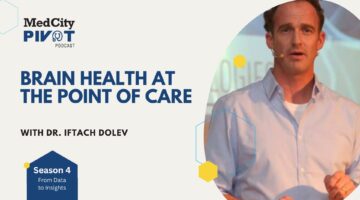
I recently caught up with my long-time friend Dr. Scott Finley, a physician informaticist who spent much of his career helping build and fine-tune clinical systems. In chatting with Dr. Finley, we talked about a concept he proposed several years ago about how EHRs should function as butlers for doctors and be trained to anticipate their every need.
I’ve never had a butler, but I have watched enough Masterpiece Theater over the years to know that my life might be a little easier if I had a butler to greet guests at my door, serve meals, or bring me the occasional cup of tea. A good butler, of course, would remember exactly how I like my tea – with a slice of lemon and a dash of honey – and that my wife prefers her tea with a spoonful of sugar. Furthermore, at 5 p.m. when the butler offered drinks, he would know my drink of choice.
A good EHR – like a good butler – should serve a clinician with the information she or he needs based on the clinician’s role, the patient’s problem, and the clinician’s previous needs in similar situations. Unfortunately, most EHRs try to serve clinicians with the equivalent of a 21-page Cheesecake Factory menu, forcing users to waste time flipping from screen to screen to identify the information they need for effective decision making. With such inefficiencies, is it any wonder that clinicians continue to give their EHRs low marks for usability?
EHRs: Designed to serve the wrong master
If I had a butler, I’d want one who understands that I am the boss of my own home. I wouldn’t want a butler who made decisions on my behalf because I generally know what I want. I might become frustrated with my butler if he continuously suggested I drink coffee when I prefer tea or sat my guests in the kitchen when I want to entertain in the living room.
Similarly, doctors don’t want EHRs that “boss” them into using disruptive workflows that interfere with how they practice medicine. Clinicians know the type of information they want from the EHR and don’t want to waste time wading through all the other information the computer tries to serve them. Furthermore, they don’t need the EHR to make clinical decisions on their behalf and tell them what they already know.
Unfortunately, most EHRs were not designed to serve the needs of clinicians. Instead, they were created to serve a different master: the individuals responsible for billing, coding, and reporting. Meanwhile, clinicians are the ones who have to feed the computer with data that supports the needs of financial and analytics teams. However, as the end-users of EHRs and the ones requiring high-quality information to deliver optimal care, clinicians need solutions that serve their need for intuitive, efficient workflows and ready access to patient- and problem-specific information when and where they need it.
Promising action – and then a pandemic
For more than a decade, healthcare leaders have hoped that legislative changes would pave the way for usable EHRs. The 2009 passage of the Health Information Technology for Economic and Clinical Health (HITECH) Act spurred widespread adoption of EHRs but forced software developers to prioritize enhancements to satisfy HITECH incentive requirements over changes that advanced EHR usability. In fact, HITECH-mandated changes arguably made EHRs less efficient, created clunky workflows that interfere with patient interactions, and required clinicians to enter even more data.
Fast-forward to December 2016 when Congress passed the 21st Century Cures Act, which includes aggressive objectives to improve EHR interoperability between clinical systems and healthcare organizations. Again, healthcare leaders were hopeful that interoperability improvements could provide clinicians with more comprehensive and usable patient information from outside of their organization, enhancing decision-making abilities.
Despite finalizing the interoperability rules in March 2020, the U.S. Department of Health and Human Services (HHS) announced in April that it would not enforce the rules for six additional months, giving relief to providers who were facing the many unforeseen challenges of Covid-19. In October 2020, HHS announced an additional three-month delay for enforcement to give providers more time to focus on the pandemic.
Despite good intentions, the government’s efforts to improve EHR usability and interoperability continue to fall short and the endpoints keep moving. The health crisis has indeed strained clinical and health IT resources, but it’s also underscored how badly our healthcare ecosystem’s need solutions that facilitate the sharing of key patient information, such as preexisting conditions and medication histories, and efficiently serve the needs of frustrated and burned-out clinicians.
Time to end the waiting game
Clinicians are tired of waiting on government mandates that may or may not deliver the usability they need to perform their jobs more efficiently – which is one reason some healthcare organizations are looking outside of their legacy EHR vendors for solutions that streamline clinician workflows, facilitate interoperability, and deliver clinicians the key information they require for effective decision making at the point of care.
For example, after being unable to find a hospital information system that met their needs, a nonprofit health system in the East Coast opted to build a new solution from the ground up. The organization was disillusioned by promises that key enhancements were “coming soon” and opted to develop their own system from scratch.
Unlike traditional EHRs developed to serve the needs of billers and coders, the organization’s solution includes a rules-based, clinician-designed engine that leverages clinician knowledge to serve clinicians’ needs. Clinicians have ready access to the exact information they need, when they need it, without having to wade through pages of data that is not relevant to the patient in front of them.
Not all organizations have the financial, clinical, and IT resources to build their own EHR, but can add similar functionality to their existing EHR. Such technology seamlessly integrates into legacy systems to enhance usability and facilitate the transfer and exchange of clinical information. With the addition of mapping tools that link relevant clinical concepts, for example, clinicians can immediately view pertinent diagnoses, medications, or similar information, regardless of where the original concept originated.
Healthcare leaders have a choice: they can continue to wait for the enactment and enforcement of government-mandated changes that may or may not serve the needs of clinicians. Alternately, they can embrace proven solutions today that make their EHRs a bit more like a good butler – and serve the needs of clinicians.
Photo: sqback, Getty Images
David Lareau is Chief Executive Officer of Medicomp. Lareau joined Medicomp in 1995 and has responsibility for operations and product management, including customer relations and marketing. Prior to joining Medicomp, Lareau founded a company that installed management communication networks in large enterprises such as The World Bank, DuPont and Sinai Hospital in Baltimore. The Sinai Hospital project, one of the first PC-based LAN systems using email and groupware, was widely acknowledged as one of the largest and most successful implementations of this technology.
Lareau’s work at Sinai led to the founding of a medical billing company that led, in turn, to his partnership with Medicomp. Realizing that the healthcare industry made less use of information technology than almost any other industry, particularly in the area of clinical care, Lareau immediately saw the potential for Medicomp’s powerful technologies and joined the company to help fulfill Peter Goltra’s vision.
This post appears through the MedCity Influencers program. Anyone can publish their perspective on business and innovation in healthcare on MedCity News through MedCity Influencers. Click here to find out how.










